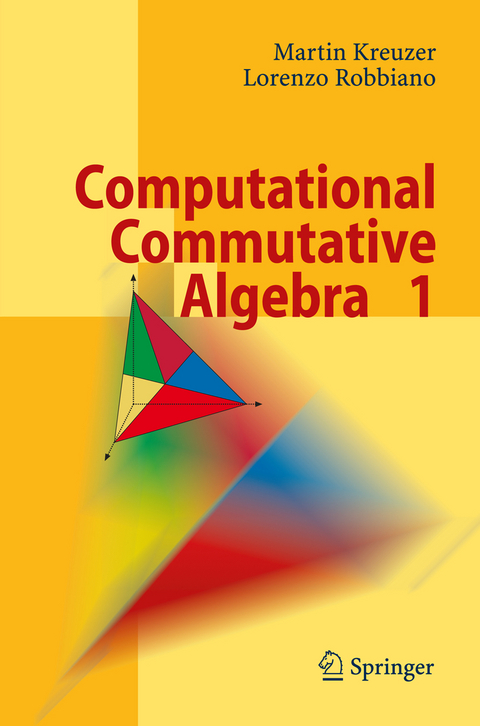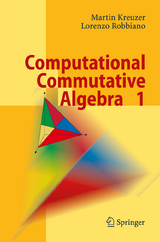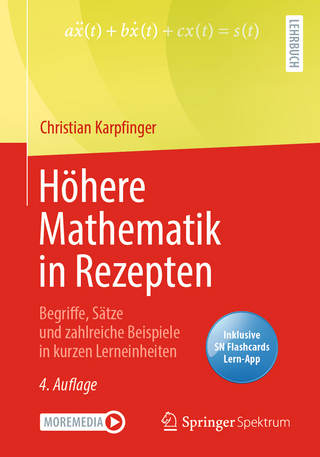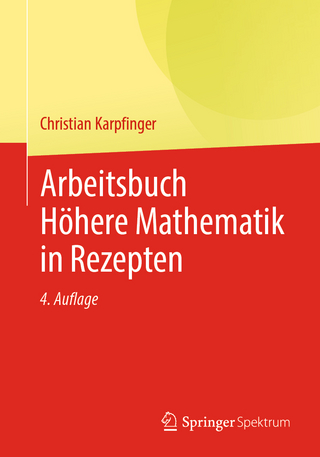Computational Commutative Algebra 1
Springer Berlin (Verlag)
978-3-540-67733-8 (ISBN)
Hofstadter's Law: It always takes longer than you think it will take, even if you take into account Hofstadter's Law. (Douglas R. Hofstadter) Dear Reader, what you are holding in your hands now is for youabook. But for us, for our families and friends, it has been known as the book over the last three years. Three years of intense work just to ?ll three centimeters of your bookshelf! This amounts to about one centimeter per year, or roughly two-?fths of an inch per year if you are non-metric. Clearly we had ample opportunity to experience the full force of Hofstadter's Law. Writing a book about Computational Commutative Algebra is not - like computing a Gr¨ obner basis: you need unshakeable faith to believe that the project will ever end; likewise, you must trust in the Noetherianity of polynomial rings to believe that Buchberger's Algorithm will ever terminate. Naturally, we hope that the ?nal result proves our e?orts worthwhile. This is a book for learning, teaching, reading, and, most of all, enjoying the topic at hand.
Foreword.- Introduction.- 1. Foundations.- 2. Gröbner Bases.- 3. First Applications.- A. How to Get Started with CoCoA.- B. How to Program CoCoA.- C. A Potpourri of CoCoA Programs.- D. Hints for Selected Exercises.- Notation.- Bibliography.- Index.
From the reviews:
"... This is one of the most refreshing mathematical books I have ever held in my hands. The authors do not believe in teaching by spreading out the material, but they introduce it via questions and discussions, they explore it in an intuitive fashion, exercise it through well-chosen examples, and start the reader on his own expeditions through numerous "tutorials", i.e., guided projects. This is academic teaching at its best: if I had not seen it, I should not have believed that it can be done so well. ... In conclusion, this book gives students a stimulating introduction to commutative algebra very much geared to their need, and it provides numerous useful ideas to those who teach the subject." (H.Stetter, IMN - Internationale Mathematische Nachrichten 2003, Vol. 57, Issue 193)
"This account of polynomial rings, Gröbner bases and applications such as computations of syzygies is written from the point of view of a computer user; as a result,it often provides new insights. The exercises and tutorials (how to work with CoCoA) add to the usefulness of the volume." (Mathematika 48, 2001)
"Das Buch ist in einem aufmunternd lockeren Stil geschrieben und für Studierende gut zum Selbststudium geeignet. Der präsentierte Stoff wird durch viele Beispiele und Übungsaufgaben (teilweise mit Anleitungen im Anhang) ergänzt. Weiter sind in jedem Abschnitt sorgfältig ausgearbeitete Tutorials angefügt, die zur Benutzung von Computeralgebrasystemen, insbesondere CoCoA, anregen sollen." (Computeralgebra-Rundbrief, Nr. 28, März 2001)
"Four years ago the authors published the first volume of a projected seris about computational commutative algebra which "took three years of intense work just to fill three centimeters of your bookshelf". Now they have gifted us with the second volume, and they say that "the completion of this volume took four years and it is about four centimeters thick. Thus we have a confirmedinvariant which governs our writing: our velocity is one centimeter per year." These quotations from the foreword of the book give a clue of how amusing it is, and also how mathematically solid it is.
In this second volume the authors continue with the same style as the first, an almost humorous one. [...]
It was a pleasure to review this nice book but, as always, the equilibrium of the world depends on good and bad things, and the "bad thing" is the authors' decision to not write a third volume. In their own words: "Alas, we have to inform you that this is absolutely and definitely the second and last volume of the trilogy." Fortunately, these two volumes collect so large an amount of information and inspiration that we can say the authors actually fulfilled our expectations."
Paulo F. Machado, Mathematical Review Clippings 2006h
"An excellent, non-standard, elementary and self-contained introduction to the theory of Gröbner bases and its applications ... . Moreover, the style is very friendly and relaxing ... . As it is now, this book can be used either to introduce the theory of Gröbner bases to students with a basic knowledge of algebra or to provide a first introduction to commutative algebra ... ." (Laureano Gonzélez-Vega and Tomás Recio, ACM SIGSAM Bulletin, Vol. 38 (2), 2004)
| Erscheint lt. Verlag | 27.9.2000 |
|---|---|
| Zusatzinfo | X, 322 p. |
| Verlagsort | Berlin |
| Sprache | englisch |
| Maße | 155 x 235 mm |
| Gewicht | 616 g |
| Themenwelt | Mathematik / Informatik ► Mathematik ► Algebra |
| Schlagworte | 12Y05 • 13E15 • 13F20 • 13P10 • 14Qxx • 68W30 • algorithms • CoCoA • Commutative algebra • Computeralgebra • Groebner Bases • linear algebra • polynomial systems • Scientific Computing • Scientific Computing / Wissenschaftliches Rechnen • Splines |
| ISBN-10 | 3-540-67733-X / 354067733X |
| ISBN-13 | 978-3-540-67733-8 / 9783540677338 |
| Zustand | Neuware |
| Informationen gemäß Produktsicherheitsverordnung (GPSR) | |
| Haben Sie eine Frage zum Produkt? |
aus dem Bereich




